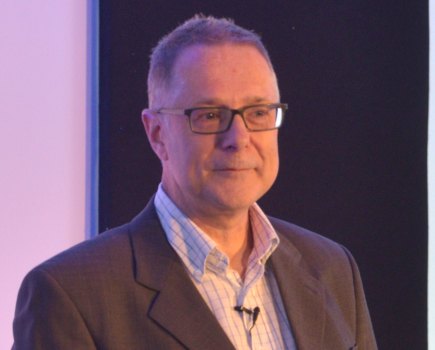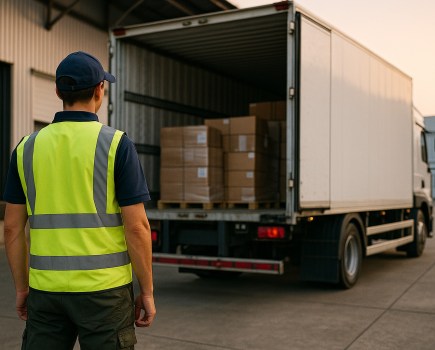The road haulage sector is under pressure to reduce its emissions and decarbonise. New truck models, new forms of lower carbon energy to power them, and new infrastructure to deliver that energy efficiently will be required to make this happen. Across Europe, governments are bringing in regulations to encourage decarbonising. For example, the German government has introduced road tolls for HGVs with exemptions for trucks that run on CNG and LNG, and the UK government is aiming to reduce HGV emissions by 15 per cent from 2015 levels by 2025. Truck manufacturers are working hard to develop lower carbon models to help fleets meet environmental obligations. Many manufacturers now expect that by 2040, 100 per cent of their sales will be either electric- or fuel cell-powered vehicles.
However, the wider industry needs to work together to make sure that – in tandem with the development in lower carbon vehicles – the infrastructure is there to deliver new lower carbon fuels. Data suggests zero-emission vehicles will represent 37 per cent of all medium-duty and heavy-duty vehicle sales in Europe by 2030. There will need to be 140,000 public and destination electric charging points and 1500 hydrogen fuelling stations to support this.
The decarbonisation of the trucking sector is a significant challenge for operators. Lower carbon and zero-emission trucks and the infrastructure needed to fuel them are, today, relatively expensive and not yet widely available. In addition, there is greater complexity in decarbonising trucks compared to passenger vehicles.
Electric and hydrogen fuel cell trucks, and the technology needed to support them, are not yet available at scale. Therefore, other ‘transition’ fuels, such as renewable diesel and bio-LNG could help fleets take some important first steps towards decarbonising. Truck operators are going to need a range of transition fuels at different points over the next decade and beyond. At bp, we believe flexibility is essential if we are to help our fleet customers navigate their way through the energy transition. We are focusing on providing four different options:
1. Renewable diesel (HVO)
HVO (hydrotreated vegetable oil) is made from cooking fats and other waste oils that are specially treated and turned into cleaner substitute fuels, such as diesel and jet fuel. It can reduce net CO2 emissions by up to 90 per cent, NOx by 30 per cent and other harmful vehicle particulates by 85 per cent. bp acquired a
30 per cent stake in Green Biofuels in February 2022. Its product can be used in diesel engines today without additional modifications or investment.
2. Biomethane (bio-LNG & bio-CNG)
Biomethane gas is captured from organic waste as it breaks down at landfill sites or processed in anaerobic digestors. While bio-CNG is a compressed form of biomethane, bio-LNG is the liquid form. Both can be used in gas trucks, reducing emissions by up to 85 per cent. In December 2021, bp acquired a 29 per cent stake in Gasrec, the UK’s largest dual provider of bio-LNG and bio-CNG for road transport. Gasrec built the UK’s first bio-LNG station and today refuels around 40 per cent of the UK’s gas-powered HGVs.
3. EV charging
Electric vehicles (EV) use a battery to store power from the electricity grid that is then used to run an electric motor to turn the wheels. Because trucks are larger than passenger cars, they typically need a lot more power to ensure the battery is charged in a timely way. When the electricity used to run an EV is made from renewable sources, tailpipe emissions fall by 100 per cent. bp pulse, bp’s EV charging business, is rapidly growing its network for both passenger cars and the truck industry – with a particular focus on ultra-fast charging. We also work with hauliers to install and operate charging points at their sites and dedicated charging hubs. Globally, bp aims to grow its network of public EV charging points by 2030 to over 100,000 worldwide. And in July 2022, we opened our first ultra-fast-charging facilities aimed at medium and heavy-duty electric trucks on our retail site at Schwegenheim in Rheinland-Pfalz, Germany.
4. Hydrogen
Hydrogen can be made in different ways and when used in a fuel cell, it is turned into electricity to power a vehicle, with water vapour the only tailpipe emission. Hydrogen’s energy density makes it an ideal option for heavy-duty, long-haul transport – although there are many challenges to overcome, including developing the technology and infrastructure, vehicle costs, as well as considering the emissions caused during the green hydrogen production process. Working with vehicle manufacturers and technology specialists, bp is helping to overcome those challenges to start building the production facilities and infrastructure to create reliable hydrogen mobility. This includes the green hydrogen hub HyGreen Teesside in northeast England, which is expected to make enough green hydrogen to power 1300 heavy-duty trucks. Last year, we announced bp and Daimler are partnering to help accelerate the introduction of a hydrogen network, supporting the roll-out of a key technology for the decarbonisation of UK freight transport. Together, we intend to pilot both the development of hydrogen infrastructure and the introduction of hydrogen-powered fuel-cell trucks in the UK.
Mobility hubs
While we intend to develop new dedicated electric charging and hydrogen sites, we also want to create a network of mobility hubs along key logistics corridors across Europe providing fleets with a range of energy options, including traditional fuels. We want to future-proof these hubs so we can adapt our energy options to operators’ changing needs and support them at every stage of their decarbonisation journey. And we want to design networks to support driver wellbeing by providing them with essential amenities. We are already working with some of our biggest fleet customers to help them navigate the energy transition. Understanding their needs means we can help them access the right fuels at the right time to keep their fleets on the road. Now, we want to do the same to help them decarbonise. Working with new partners to develop the right operating and technical solutions over the next decades, we aim to offer those customers the flexibility they need on the road to help them reduce emissions from their truck fleets. It’s clear the refuelling network will need to undergo a huge change to support customers of the next 100 years. It will take a lot of investment, partnerships and significant work to create this new mobility backbone.






